Discover 35 hidden attractions, cool sights, and unusual things to do in Iași (Romania). Don't miss out on these must-see attractions: Palace of Culture, Cetățuia Monastery, and Iași. Also, be sure to include Saint Nicholas Princely Church in your itinerary.
Below, you can find the list of the most amazing places you should visit in Iași (Iași).
Table of Contents
Palace of Culture
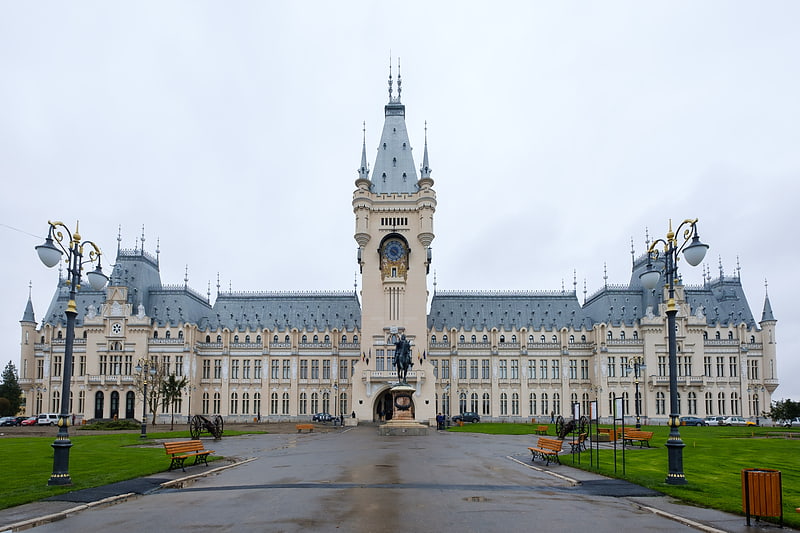
Also known as: Palatul Culturii din Iași
Neogothic landmark containing 4 museums. The Palace of Culture is an edifice located in Iași, Romania. The building served as Administrative and Justice Palace until 1955, when its destination was changed, being assigned to the four museums nowadays united under the name of Moldavia National Museum Complex. Also, the building houses the Cultural Heritage Conservation-Restoration Centre, and hosts various exhibitions and other events.
The Palace of Culture is listed in the National Register of Historic Monuments.[1]
Address: Piata Stefan cel Mare si Sfant 1, 700028 Iasi
Cetățuia Monastery
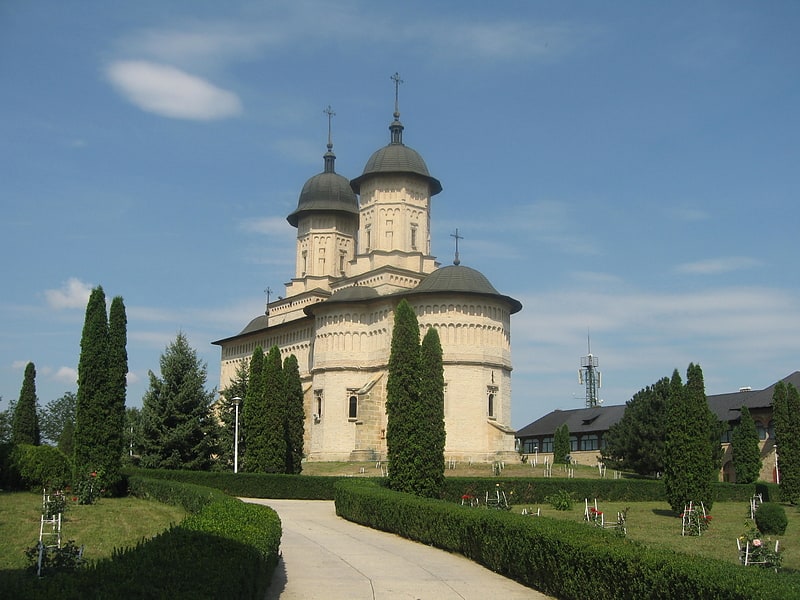
Also known as: Mănăstirea Cetățuia din Iași
Monastery in Iași, Romania. The Cetățuia Monastery is a Romanian Orthodox monastery located in Iași, Romania. The monastery is listed in the National Register of Historic Monuments.[2]
Address: 1 Cetățuia, Iași
Iași
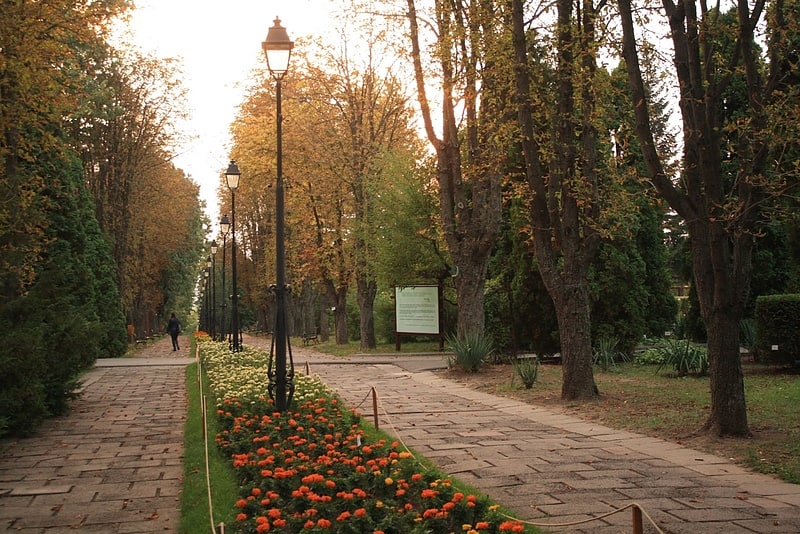
Botanical garden in Iași, Romania. The Iași Botanical Garden, now named after its founder, Anastasie Fătu, is a botanical garden located in the Copou neighbourhood of Iași, Romania. Established in the year 1856 and maintained by the Alexandru Ioan Cuza University, it is the oldest and largest botanical garden in Romania.[3]
Address: Str. Dumbrava Roșie nr. 7-9, 700471 Iași
Saint Nicholas Princely Church

Also known as: Biserica Sfântul Nicolae Domnesc din Iași
Orthodox church in Iași, Romania. Saint Nicholas Princely Church is a Romanian Orthodox church located at 65 Anastasie Panu Street in Iași, Romania. It is dedicated to Saint Nicholas.[4]
Address: Piața Palat, Iași
Copou Park
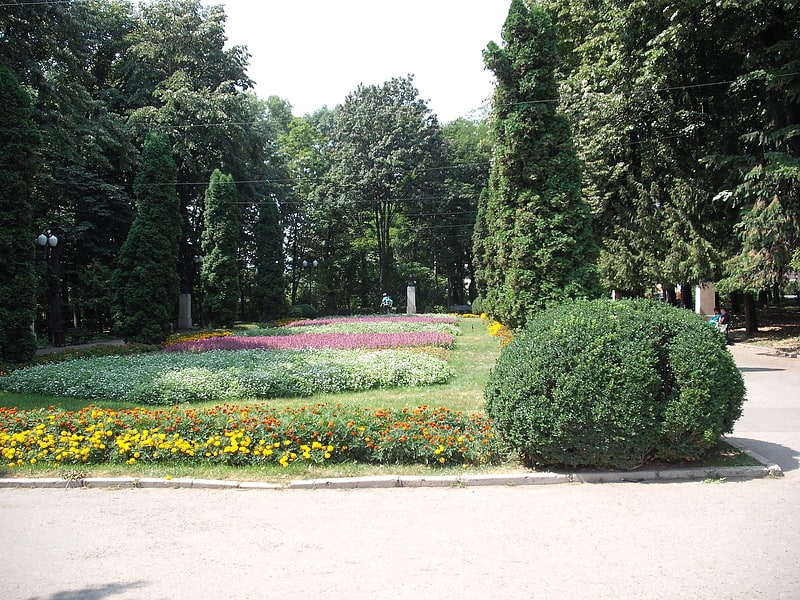
Also known as: Parcul Copou
Public garden with obelisk and famous tree. The Copou Park or Copou Gardens is the oldest public park in Iaşi, Romania. Its development started in 1834 under the reign of Mihail Sturdza, making the park one of the first public gardens in Romania and a Iaşi landmark. In its centre lies the Obelisk of Lions, a 13.5 m tall obelisk dedicated to Regulamentul Organic, the first law on political, administrative and juridical organization in the Romanian Principalities.
Other landmarks include Eminescu's Linden Tree, the Mihai Eminescu Museum and the Junimea Alley. The gardens are a popular destination for tourists and locals, as well as a favourite location for poetry festivals, photography exhibitions and art and craft fairs.
The park covers approximately 10 hectares (down from 19 hectares at the height of its late-19th century development) and has been described as one of the most beautiful public gardens in Moldavia.[5]
Address: Bd. Carol I, Iași
Metropolitan Cathedral
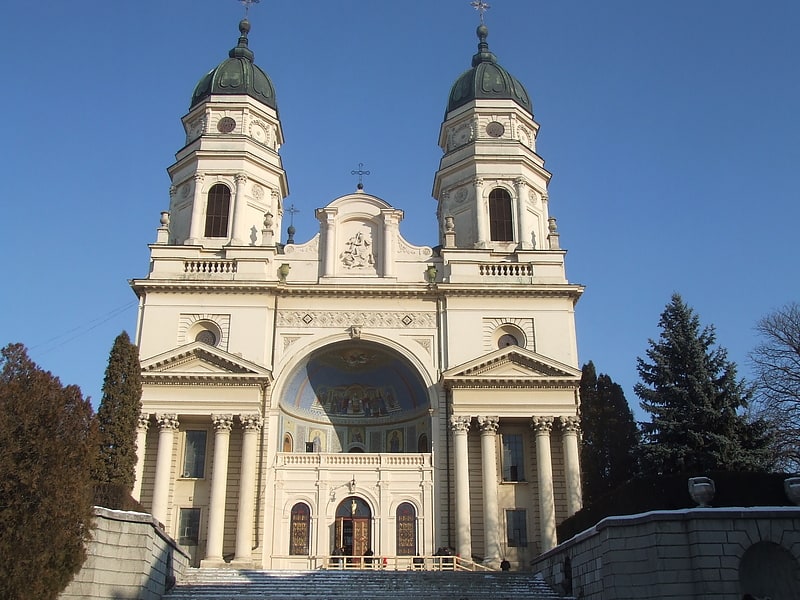
Also known as: Catedrala Mitropolitană din Iași
Cathedral in Iași, Romania. The Metropolitan Cathedral, Iași, located at 16 Ștefan cel Mare și Sfânt Boulevard, Iași, Romania, is the seat of the Romanian Orthodox Archbishop of Iași and Metropolitan of Moldavia and Bukovina, and the largest historic Orthodox church in Romania. It is dedicated to Saint Parascheva, to the Presentation of Jesus and to Saint George. Its form was inspired by the late Italian Renaissance style, with Baroque elements dominating the interior and exterior decorative features. The Metropolitan Cathedral is listed in the National Register of Historic Monuments.[6]
Address: Bd. Ștefan cel Mare și Sfânt nr. 16, 700064 Iași
Barnovschi Church
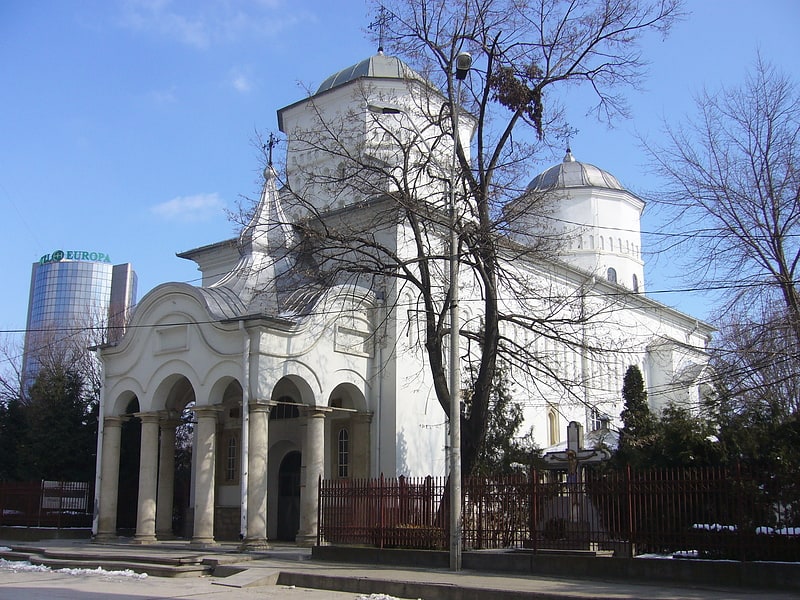
Also known as: Biserica Barnovschi
Orthodox church in Iași, Romania. The Barnovschi Church is a Romanian Orthodox church located at 26 Ghica Vodă Street in Iași, Romania. It is dedicated to the Dormition of the Mother of God and to Saints Joachim and Anna.[7]
Address: Strada Grigore Ghica 26, Iași
Eminescu's Linden Tree
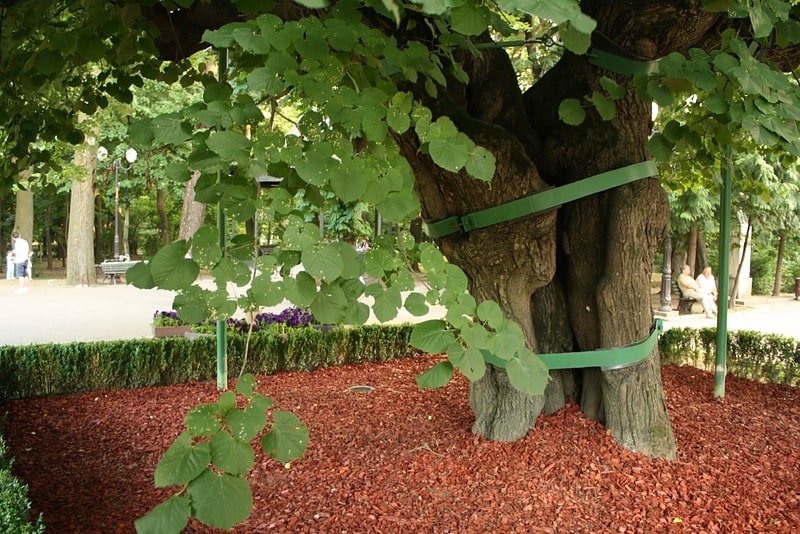
Also known as: Teiul lui Eminescu
Tourist attraction in Iași, Romania. Eminescu's Linden Tree is a 500-year-old silver lime in Copou Park, Iași, Romania.
Mihai Eminescu reportedly wrote some of his best works underneath this lime, rendering the tree one of Romania's most important natural monuments and a Iași landmark.[8]
Address: Bulevardul Carol I, Iași
Bărboi Church
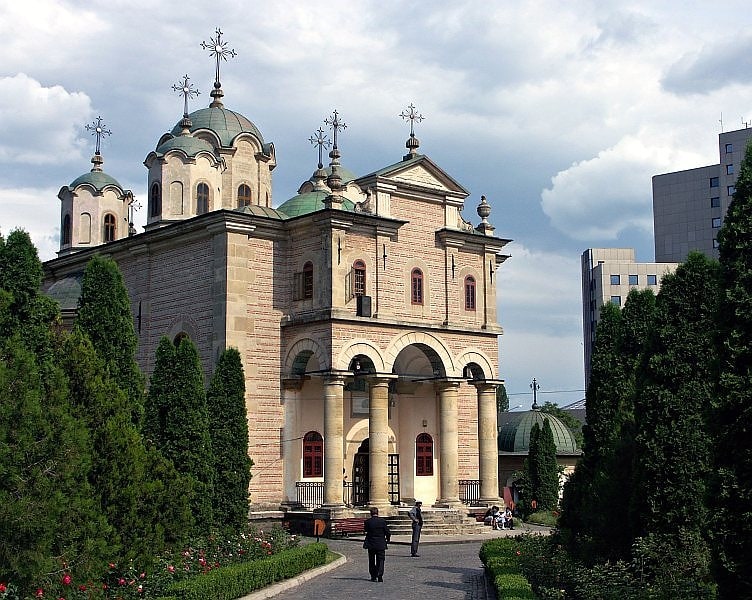
Also known as: Biserica Bărboi
Parish church in Iași, Romania. The Bărboi Church, dedicated to Saints Peter and Paul, is a Romanian Orthodox parish church located at 12 Bărboi Street, Iaşi, Romania.[9]
Address: Stradela Bărboi 10, 700259 Iași
Union Monument

Also known as: Monumentul Unirii din Iași
Tourist attraction in Iași, Romania. Union Monument, a monument of white marble in the Romanian city of Iaşi, was designed by Princess Olga Sturdza and unveiled in 1927 at the base of Carol Boulevard. It consists of a central piece and four smaller ones representing the historic provinces of Transylvania, Bessarabia and Bukovina and the Romanian diaspora. Demolished in 1947 as the Romanian Communist Party was tightening its grip on the country, it was rebuilt in 1999, this time being placed in Piaţa Naţiunii, in front of the Grigore T. Popa University of Medicine and Pharmacy.[10]
Address: Strada Alexandru Lapusneanu 14, 700057 Iasi
Saint Sabbas Church
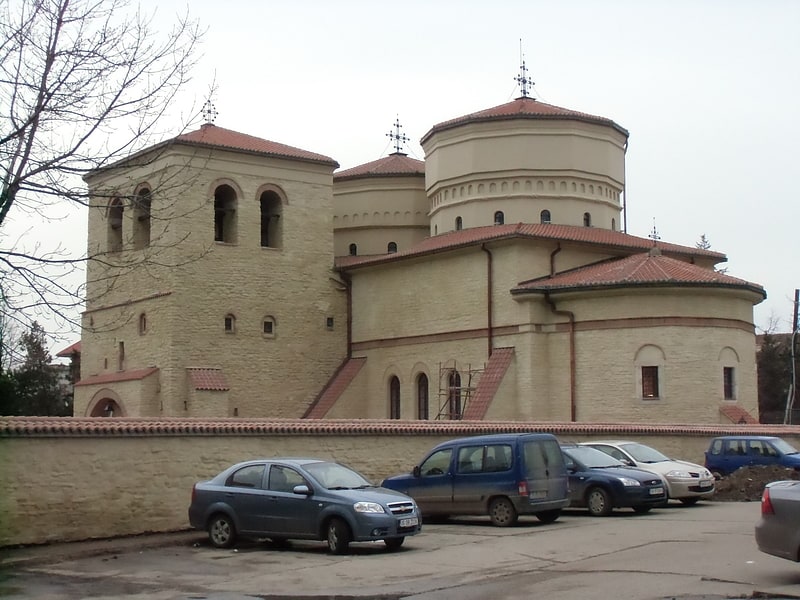
Also known as: Biserica Sfântul Sava din Iași
Orthodox church in Iași, Romania. Saint Sabbas Church is a Romanian Orthodox church located at 44 Costache Negri Street in Iași, Romania. It is dedicated to Saint Sabbas the Sanctified.[11]
Address: Strada Costache Negri 44, 700073 Iași
Attacking Cavalryman Statue

Also known as: Statuia Cavaleristului în atac din Iași
Statue by Ion Dimitriu-Bârlad. The Attacking Cavalryman Statue in Iaşi, Romania is a bronze monument executed by sculptor Ioan C. Dimitriu-Bârlad and unveiled in 1927. One of the city's signature monuments, it is located in front of the SuperCopou store, across the street from the main entrance to Copou Garden.[12]
Trei Ierarhi Monastery
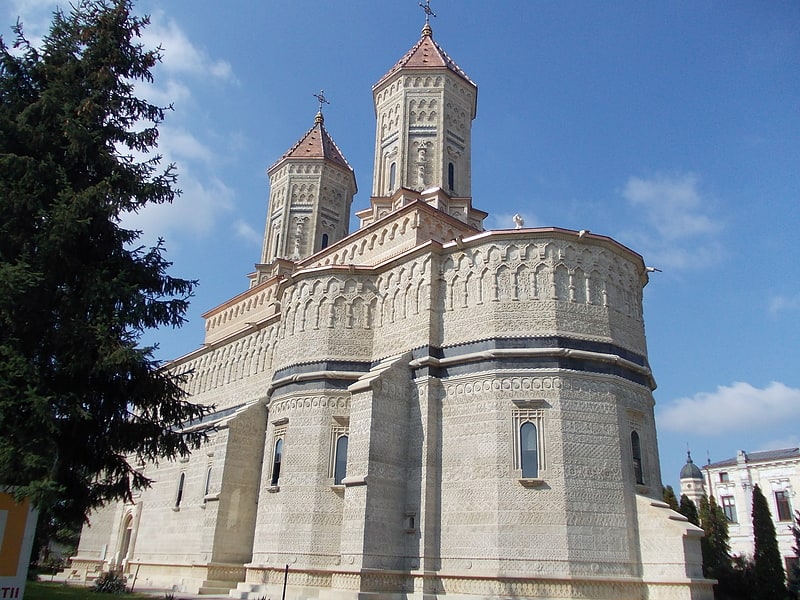
Also known as: Mănăstirea Sfinții Trei Ierarhi din Iași
Towering monastery with ornate details. Mănăstirea Trei Ierarhi is a seventeenth-century monastery located in Iași, Romania. The monastery is listed in the National Register of Historic Monuments and included on the tentative list of UNESCO World Heritage Sites.[13]
Address: 28 Bulevardul Ștefan cel Mare și Sfânt, Iași
Banu Church
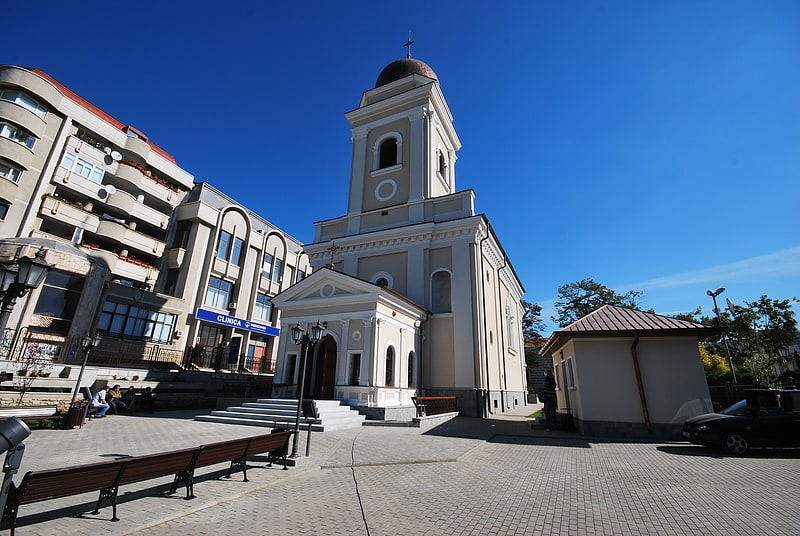
Also known as: Biserica Banu din Iași
Orthodox church in Iași, Romania. The Banu Church is a Romanian Orthodox church located at 9 Banu Street in Iași, Romania. It is dedicated to All Saints' Day.[14]
Address: Pasajul Banu nr. 9, 700127 Iași
Saint Lazarus Church
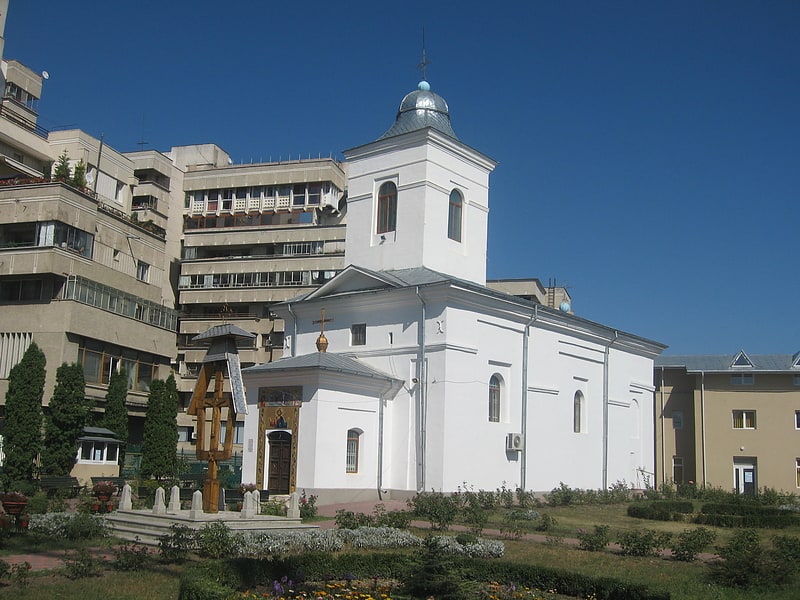
Also known as: Biserica Sfântul Lazăr din Iași
Orthodox church in Iași, Romania. Saint Lazarus Church is a Romanian Orthodox church located at 1 Dimitrie Gusti Street in Iași, Romania. It is dedicated to Lazarus of Bethany and to Catherine of Alexandria.
The first church on the site was built of wood in 1703-1704 and was dedicated to Lazarus. Its ktitor was Prince Mihai Racoviță. Located near the princely customs house and close to Racoviță's family homes, it was situated atop a hill which at the time adjoined the eastern edge of the city. Its location gave it the nickname of Customs House Church (Biserica de la Vamă). It is mentioned in the chronicle of Ion Neculce, and in several documents of the 18th century. The church was burned by the Ottomans. It was rebuilt in brick, on a stone foundation, in 1785, the new ktitors being Sandu and Luca Grigorie. The same year, it was turned into a monastery dedicated to the Holy Sepulchre. Greek monks moved in, building residences and cells on the ruins of the Racoviță properties. The Greeks also brought relics of Saint Charalambos, Theodore Stratelates and a Saint Michael; these are kept today in the nave, in a silvered box with Greek inscriptions. There is a piece of the True Cross in the altar. Outside the church, near the north wall, there is a marble gravestone inscribed in the Romanian Cyrillic alphabet.
The church burned around 1822 and was repaired by Luca Grigorie working with one Sandu; they fixed the roof, siding and adjoining buildings. In 1863, following the secularization of monastic estates in Romania, the monastery was closed, its properties seized, and the Greek monks departed. It became a filial holding of the Barnovschi Church and was subsidized by Iași City Hall. According to historian N. A. Bogdan, at the beginning of the 20th century, the remains of walls and foundations belonging to the Racoviță properties were still visible. The church suffered serious damage during the 1940 Vrancea earthquake and the 1977 Vrancea earthquake; it underwent major repairs in 1967, during the 1980s and from 2006 to 2009. As a result of construction in the surrounding area between 1977-1987, excavations were performed that unearthed several hundred human skeletons. These were later reburied.
The shape of the church is rectangular, with a semicircular altar wall. The interior has a foyer, vestibule, nave and altar; the foyer is lower and separated from the vestibule by several steps. The vestibule features a lengthy list of the church's benefactors. The church is listed as a historic monument by Romania's Ministry of Culture and Religious Affairs.[15]
Address: 1 Strada Dimitrie Gusti, Iași
Armenian Church
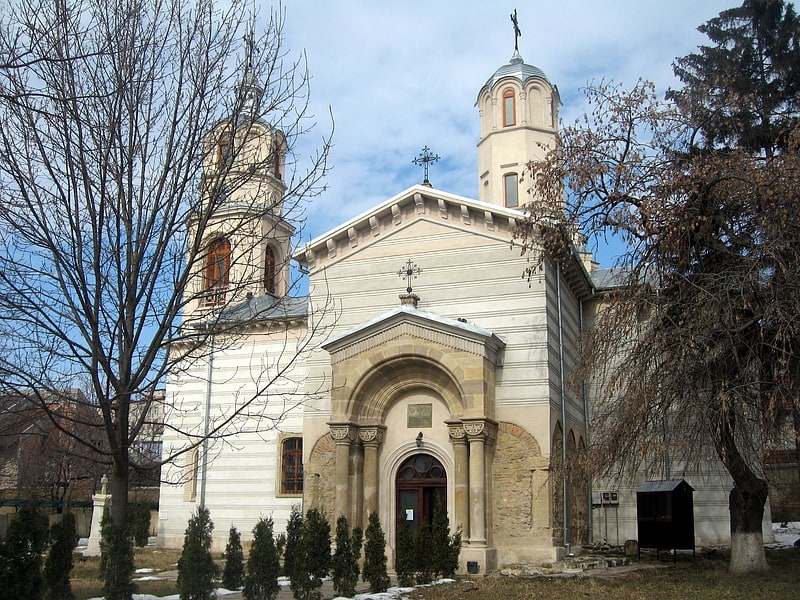
Also known as: Biserica Armenească din Iași
Armenian church in Iași, Romania. The Armenian Church is an Armenian Apostolic church located at 22 Armeană Street in Iași, Romania. It is dedicated to the Virgin Mary.
It is known for certain that the church was restored in 1803. The inscription found on an old brick in the transept, which includes the date 1395, has given rise to much commentary that has not shed light on the building's prior existence. The Armenian community used neither the Julian nor the Gregorian dating system at the time, and neither did the Romanians, leading to the conclusion that the inscription is a later forgery. However, it is true that Armenians built a church in Iași, dedicated to the Dormition of the Mother of God, in the 14th century. It appears to have existed in 1583-1586, when it drew the attention of a foreign visitor.
According to tradition, the neighboring Saint Sabbas Church was built on the site of an Armenian church taken by the Romanian Orthodox. A second Armenian church, dedicated to Saint Gregory the Great, burned in 1827. There is evidence that Princes Mihai Racoviță, Nicholas Mavrocordatos and Dimitrie Cantemir granted tax exemptions to the clergy of the two parishes. Around 1830-1832, an old Armenian cemetery existed behind the Vulpe Church. It was used for those who died during epidemics and could not be buried around the city churches.
The church has three bells, of which two are dated. A small one has a Latin inscription from 1607, and a larger one is written in Old Church Slavonic in 1887. Repairs were carried out in 1732, 1803 (from the foundations), 1929-1932 and, following World War II bombardment, 1946.
The church is listed as a historic monument by Romania's Ministry of Culture and Religious Affairs, as is the neighboring Armenian atheneum, built in 1932 and now used as the parish house.[16]
Address: Strada Armeana 24, 700038 Iasi
Lions' Obelisk
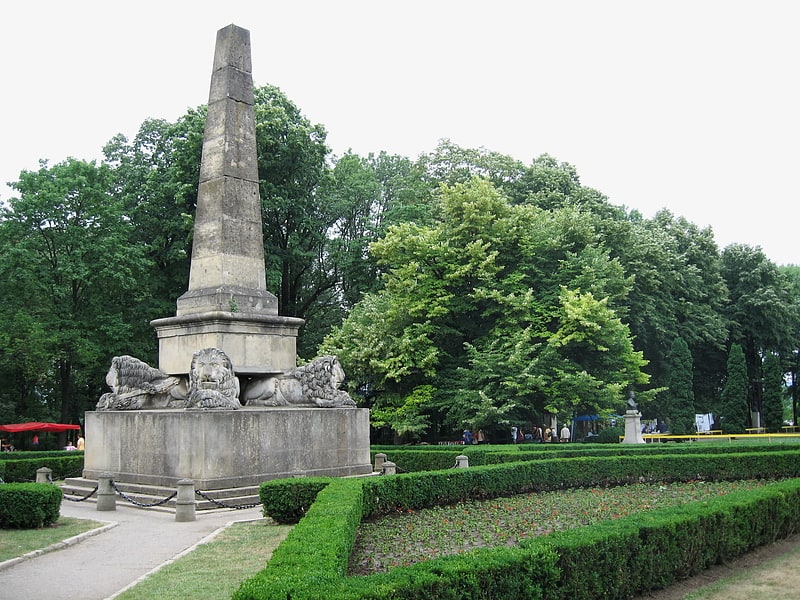
Also known as: Obeliscul cu lei din Iași
Tourist attraction in Iași, Romania. The Lions' Obelisk, also known as the Obelisk of Lions is a historical monument in Copou Park, Iași, Romania.
The construction was built between 1834 and 1841 and is dedicated to the Law of Organic Rules.
Considered one of the country's oldest public monuments, the 13.5 m (44 ft) tall edifice was finalized under the supervision of Gheorghe Asachi and is situated next to Eminescu's Linden Tree.[17]
Golia Monastery
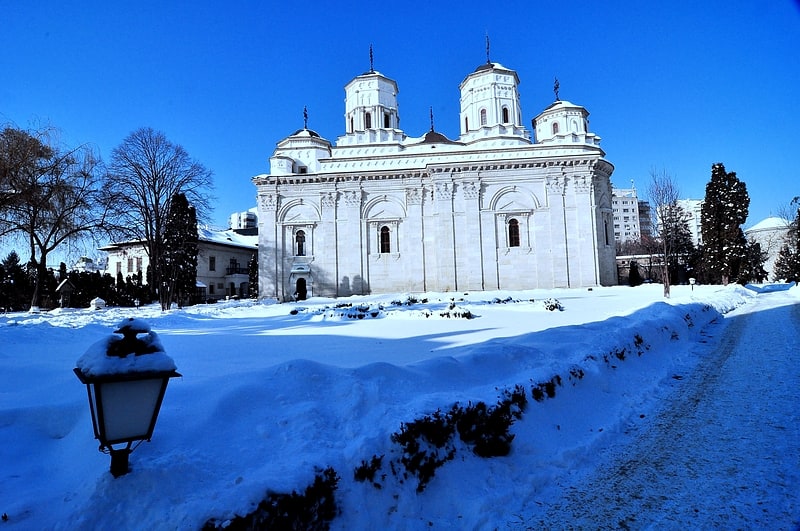
Also known as: Mănăstirea Golia
Monastery in Iași, Romania. The Golia Monastery is a Romanian Orthodox monastery located in Iaşi, Romania. The monastery is listed in the National Register of Historic Monuments. In 2012, the conservation of the Monastery was awarded the European Union Prize for Cultural Heritage / Europa Nostra Award.[18]
Address: Strada Cuza Vodă 51, 700040 Iași
Galata Monastery
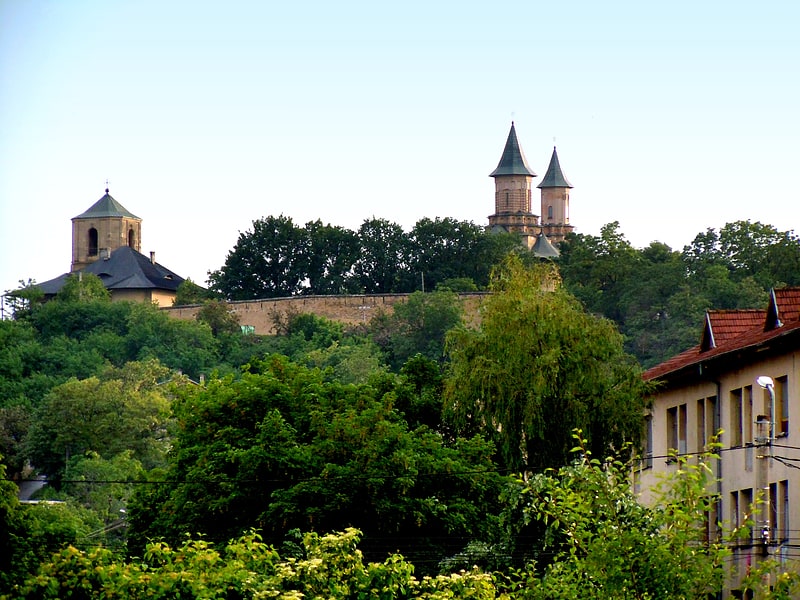
Also known as: Mănăstirea Galata
Monastery in Iași, Romania. The Galata Monastery is a Romanian Orthodox monastery for nuns, founded at the end of the sixteenth century by Moldavian Voivode Petru Şchiopul, in the west of Iaşi, Romania. The monastery is located on the top of Galata Hill, and can be easily observed from different locations of Iasi. The church, surrounded by walls with loopholes and provided with a bell tower at the entrance, looks like a fortress, often serving as a place of defense and sometimes as a royal residence. Near the church on the hill, are places that provide panoramic views over the city.
Galata Monastery is listed in the National Register of Historic Monuments. and consists of the following 4 buildings:
- Church "Resurrection" - dating from the period 1582-1583
- Prince's Palace - dating back to 1726-1728
- The bell tower - dating back to 1584
- The fortified wall - dating from 1584
Address: Strada Manastirii nr.4, 700617 Iasi
Assumption of Mary Church
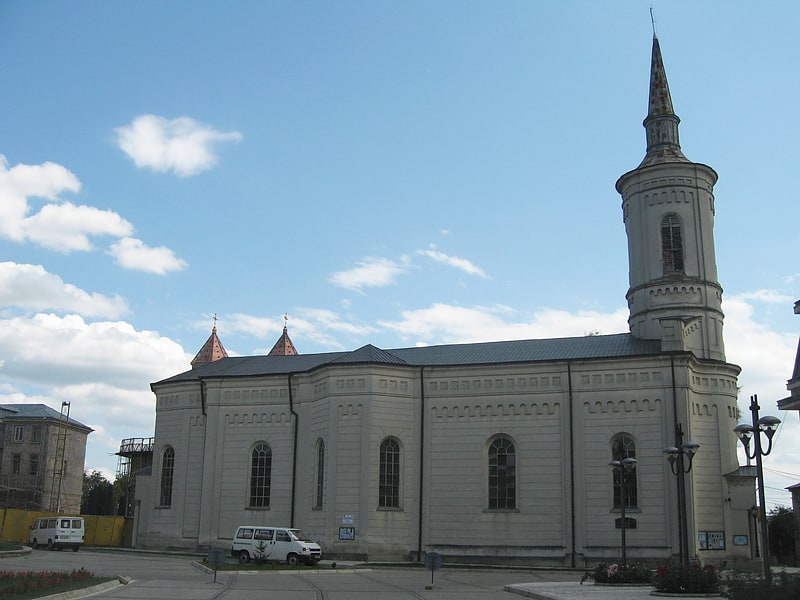
Also known as: Biserica romano-catolică Adormirea Maicii Domnului din Iași
The Assumption of Mary Church is a Roman Catholic church located at 26 Ștefan cel Mare și Sfânt Boulevard in Iași, Romania. It is dedicated to the Assumption of Mary.
The first church on the site, with the same dedication, was made of wood and known as the Franciscans' Church (Biserica Franciscanilor). A 1753 document, issued during the reign of Prince Matei Ghica, noted that a Catholic church had stood in Iași since the founding of Moldavia. In 1741, Grigore II Ghica donated two vineyards to the church. Three years later, Stanislau Jezierski, the Catholic bishop of Bacău, noted that the church was small and ready to collapse. Rebuilt in 1763, it was destroyed by fire in 1766. The church was rebuilt in brick starting in 1782, and was blessed in 1789. The ceiling fell during the 1802 Vrancea earthquake, prompting repairs. The fire of 1827, which affected much of the city, destroyed the roof, again necessitating work. In 1861, the priest Ioan Eugeniu Zapolski restored and expanded the church. In 1869, upon the request of Bishop Giuseppe Salandari, the interior was painted by a Franciscan friar from Italy. Salandari was buried in the church upon his death in 1873, as were eleven other bishops and priests. The south wall of the church features a sundial that seemingly dates to 1813. Until the early 19th century, the building was used as a monastery, and was the center of the Franciscan mission. It became a cathedral when the Iași Diocese was set up in 1884.
Built in the Baroque style, the church has a single cylindrical spire, tall and supple, above the entrance; this is also the bell tower. The exterior is plastered with stone dust, but has no special ornamentation. The interior features three marble altars. There is a classical organ with 21 sonic registers, made in Austria. Work on the much larger Our Lady Queen of Iași Cathedral began in the 1990s, and the older building was relegated to a parish church in 2005, when the new cathedral was inaugurated.
The church is listed as a historic monument by Romania's Ministry of Culture and Religious Affairs.[20]
Address: Strada Trei Ierarhi, Iași
Roznovanu Palace
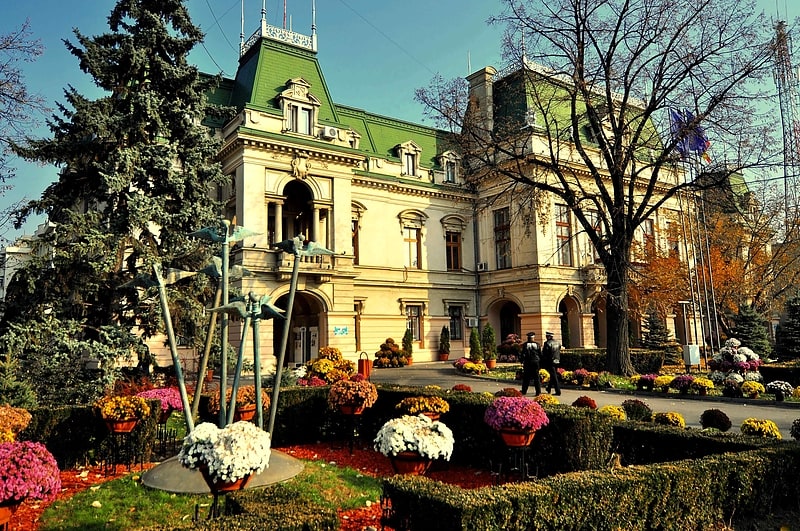
Also known as: Palatul Roznovanu
The Roznovanu Palace or Roset-Roznovanu Palace is an edifice located in Iași, Romania. It was built in the second half of the 18th century, and rebuilt between 1830 and 1833, by Iordache Ruset-Roznovanu, a member of the Rosetti family. During World War I, it hosted the Romanian government. Today, it hosts the Iași City Hall.
The Roset-Roznovanu Palace is listed in the National Register of Historic Monuments.[21]
Our Lady Queen of Iași Cathedral
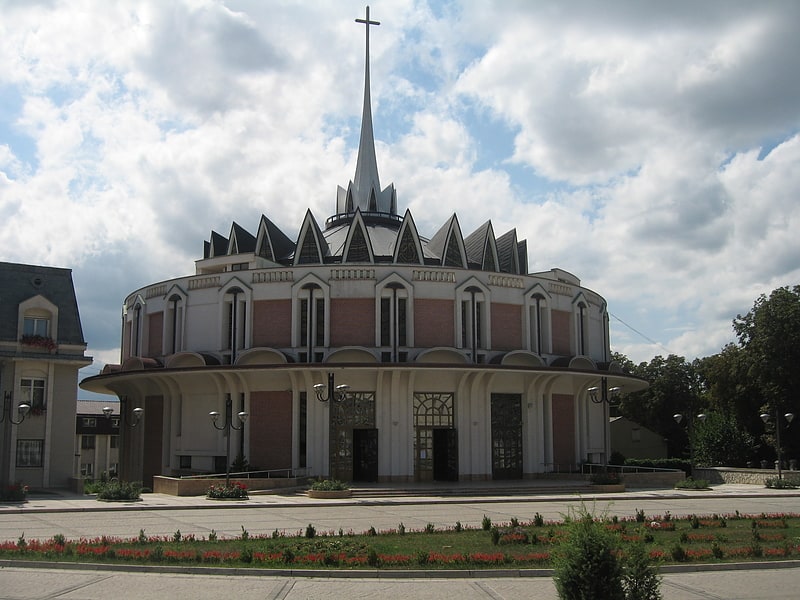
Also known as: Catedrala Sfânta Fecioară Maria Regină din Iași
Cathedral in Iași, Romania. The Our Lady Queen of Iași Cathedral It is the cathedral church of the Roman Catholic Diocese of Iași, located in the city of Iași, in northeastern part of Romania.
The new cathedral was built due to the insufficient capacity of the old cathedral of St. Mary. Until 1989, this objective could not be achieved because of the opposition of the communist regime. On August 15, 1990 was laid the first stone of the new sanctuary by Bishop Peter Gherghel, but the prefecture of Iasi ordered after a few months the suspension of work arguing that the church was too close to the Via Mare Stefan, what it affects the visibility of existing buildings in same area. The diocese then sought a new location for the cathedral. The new project was designed by architect George Heres.
In August 1992 he began work in October 1993 and the basement of the building was already fit for use for worship. The first Mass was held in the basement on Christmas Day in 1993. The cathedral was completed in June 1998. In the following years have work to reinforce the roof and finish the exterior and interior decoration. The solemn dedication of the altar and the consecration of the Cathedral of "Our Lady" was held on 10 November 2005, with a Mass concelebrated by 23 bishops and with the presence of more than 200 priests of the diocese and more than 3,500 faithful.
On 1 June 2019, Pope Francis delivered a short mass at the Our Lady Queen of Iași Cathedral, during his pastoral visit in Romania.[22]
Address: 26 Bulevardul Ștefan cel Mare, Iași
Saint George-Lozonschi Church
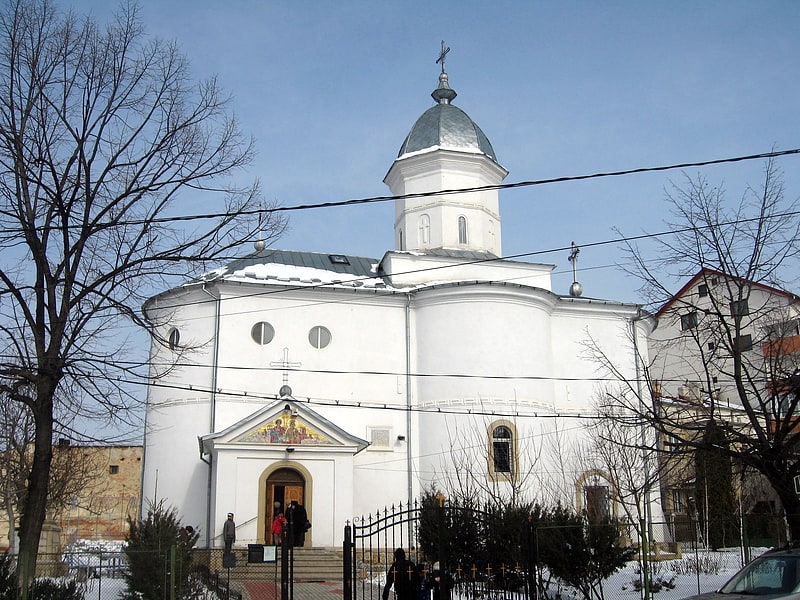
Also known as: Biserica Sfântul Gheorghe - Lozonschi din Iași
Orthodox church in Iași, Romania. Saint George-Lozonschi Church is a Romanian Orthodox church located at 2 Cloșca Street in Iași, Romania. It is dedicated to Saint George and Saint Catherine of Alexandria.[23]
Address: 18 Strada Cloșca, Iași
Mitocul Maicilor
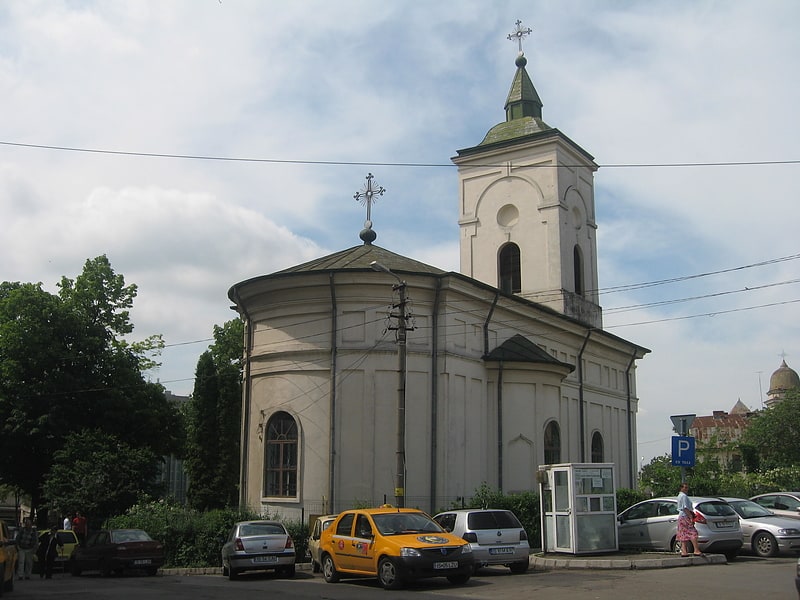
Orthodox church in Iași, Romania. Mitocul Maicilor is a Romanian Orthodox church located at 1 Trianon Passageway in Iași, Romania. It is dedicated to Parascheva of the Balkans and to Anthony the Great.[24]
Iași National Theatre
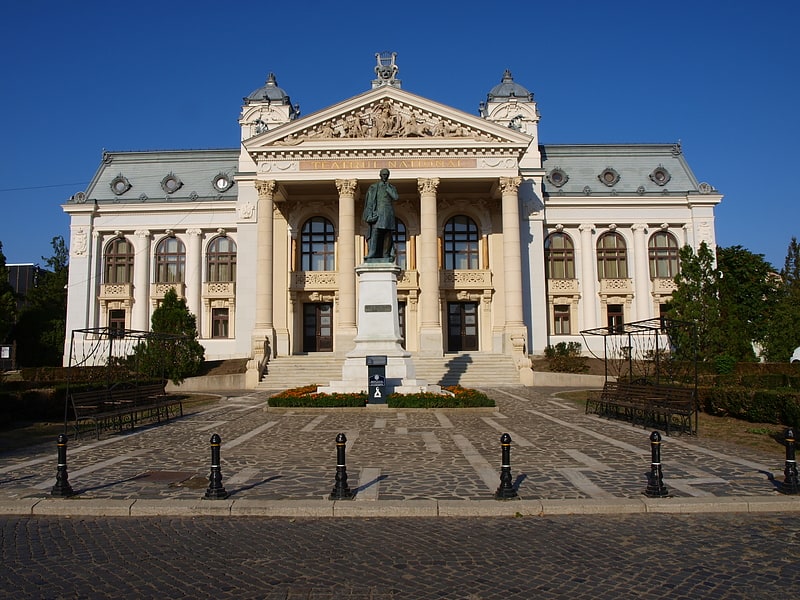
Also known as: Teatrul Național „Vasile Alecsandri” din Iași
Theatre in Iași, Romania. The Iași National Theatre in Iași, Romania, is the oldest national theatre and one of the most prestigious theatrical institutions in Romania. In 1956, it was given the name of the renowned Romanian playwright and poet Vasile Alecsandri. The building also hosts the Iași Romanian National Opera.[25]
Address: Iași, 18 Agatha Bârsescu Street
Iași Exhibition Park
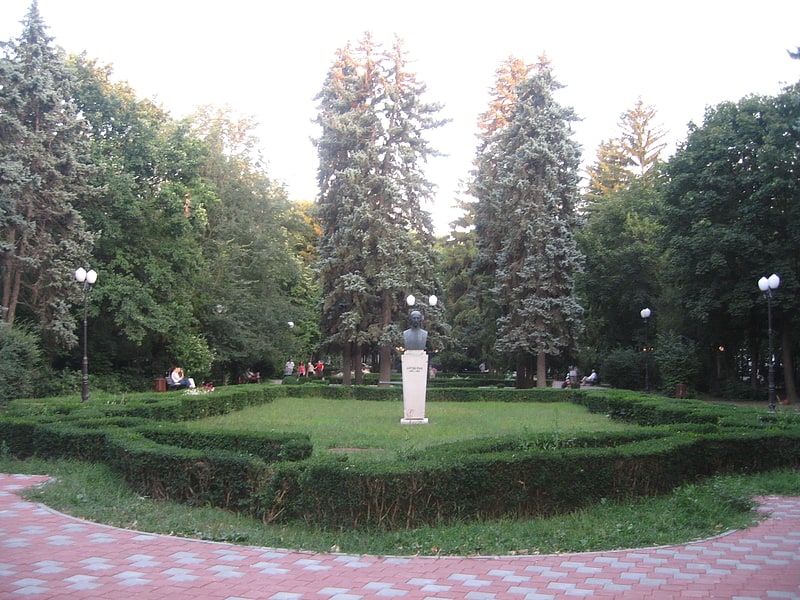
Also known as: Parcul Expoziției din Iași
Park in Iași, Romania. The Iași Exhibition Park is a park located in the Copou Hill neighborhood, Iași, Romania.[26]
White Church
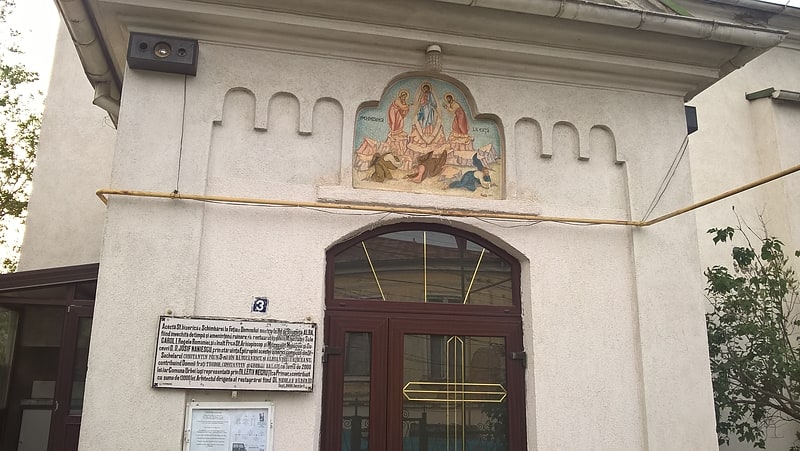
Also known as: Biserica Albă din Iași
Orthodox church in Iași, Romania. The White Church is a Romanian Orthodox church located at 3 Alba Road in Iași, Romania. It is dedicated to the Transfiguration of Jesus.
The first church on the site, dedicated to the Nativity of Jesus, was made of wooden beams varnished in white, which gave rise to the nickname. It was built before 1600 and first mentioned in 1682. Because guild members lived in the vicinity of the church at the time of its construction, it is believed to have been built by a guild. The new church was built in 1750 by Popa Velișco, and by the market-dealers' guild. The graves located around the church were transferred to Eternitatea cemetery in 1887.
A restoration took place in 1885, during the reign of Metropolitan Iosif Naniescu, and was financed by parishioners and the city hall. In 1901, Naniescu re-blessed the church and conferred the new dedication, possibly given because of its changed appearance. Interior repairs were done in 1913 and exterior in 1959. In 1971, the structure was strengthened by adding reinforced concrete and fixing the roof. The interior was painted in fresco from 1974 to 1978. The original iconostasis was removed and taken to Golia Monastery for safekeeping; the current one was set up in 1978. A cross dedicated to the aviators who died in World War II was set up in the yard in 1975; there is a grave marker from the old cemetery in front of this, but only the year 1841 can be read. The church collection includes 41 icons donated by Zoița Aramă, who died in 1818.
The church is listed as a historic monument by Romania's Ministry of Culture and Religious Affairs, having received the designation in 1962.[27]
Address: 3 Strada Alba, Iași
Toma Cozma Church

Also known as: Biserica Toma Cozma
Orthodox church in Iași, Romania. The Toma Cozma Church is a Romanian Orthodox church located at 4 Școalei Street in Iași, Romania. It is dedicated to Thomas the Apostle and to Catherine of Alexandria.
The church was built in 1807 on the west face of Muntenimii Hill, offering a view over the northwestern part of the city. The initial ktitors were Toma Cozma and his wife Ecaterina; he was a local boyar who steadily rose through the ranks: șetrar, medelnicer, paharnic and ban. It has been suggested that he was of Roma origin. The church he built was small and simple in form, without spires. It was made a metochion of Iviron on Mount Athos, and was known as the church of the potters' guild. The next ktitorissa, Maria Anastasiu Apostol Ketreanca, added a bell tower during an 1847 reparation, as attested on a plaque on the western wall. It is this inscription that notes the 1807 construction date. However, the icon of Saint Thomas, to the right of the entrance, shows the ktitor as a paharnic, indicating a date for the icon before 1806, when he was elevated to ban. As icons were ordered near the point of a church's completion, it is possible the building was finished around 1804. Maria also expanded the vestibule, built a space for vestments on the south facade and a surrounding wall.
Part of the vestibule ceiling collapsed in 1924. Repairs were undertaken in 1930-1932: the spire was rebuilt in brick, while exterior buttresses and an interior balcony for the choir were added. During World War II, the church was located in the vicinity of where German troops were quartered. On August 20, 1944, it was bombed and the altar area collapsed in flames. Repairs took place between 1950 and 1954. Following the 1977 Vrancea earthquake, the bell tower was reinforced in 1980-1982. The church is made of stone, in a trefoil plan, with two powerful buttresses. The altar and side apses are circular on the interior and exterior. There is a small foyer.
A primary school functioned near the church during the 19th century, giving rise to the name of the street on which it is located. Also, a boys' primary school where Ion Creangă taught was temporarily housed there. Eunuchs from the Păcurari district formed part of the congregation. The Toma Cozma Popular Athenaeum was housed in the church in the first part of the 20th century. This institution hosted cultural meetings, edited a magazine, founded lecture halls and ran a choir and theater troupe. In 1929, it raised a monument to Mihai Eminescu that since 1957 has sat near the Central University Library. A. D. Xenopol was baptized in the church. The church walls feature nine large icons in 1837 by the Italian Giovanni Schiavoni, and ordered by Veniamin Costache. Another, showing Ss. Peter and John, is by Octav Băncilă. The church's property includes liturgical objects such as a Gospel Book and 19th-century communion boxes, censers and crosses; sculpted candlesticks, pulpits and choirs; the carved oak iconostasis, richly ornamented and painted with neo-Byzantine icons; and the altar, with old icons and valuable liturgical books. It is rumored that in the past, the church owned a fragment of the Virgin Mary's dress and of Christ's burial shroud. On the northern part of the churchyard, there is a common grave set up after World War II and marked by a cross.
The church is listed as a historic monument by Romania's Ministry of Culture and Religious Affairs, as is the parish house, which dates to the end of the 19th century.[28]
Address: 4 Strada Școalei, Iași
Zlataust Church
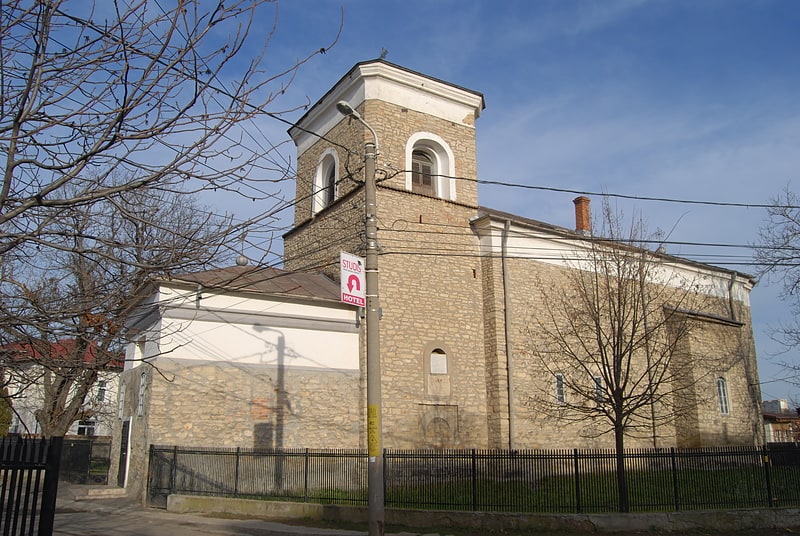
Also known as: Biserica Zlataust
Orthodox church in Iași, Romania. The Zlataust Church is a Romanian Orthodox church located at 5 Zlataust Road in Iași, Romania. It is dedicated to Saints John Chrysostom and Theodore of Amasea.
The first church on the site was a small wooden one with stone foundations, erected between 1563 and 1564. This was built by Prince Ștefan IX Tomșa, who in the early 17th century was preoccupied by the development of that part of the city, then on its periphery. Eventually, the old church deteriorated.
The present church dates to 1683, according to the inscription, and was built in thirty days by George Ducas, near the end of his third reign in Moldavia. In order to fulfill a promise, he put it under the control of church authorities from Argyrokastro in exchange for Hlincea Monastery, which he placed under Cetățuia Monastery, recently founded by him. An alternate date is late 1682: on April 20 the following year, he was obliged to accompany the Ottomans to the Battle of Vienna, and was taken prisoner by the Poles in December, while returning from the campaign. Oddly, the inscription mentions George's son Constantine, who was only 6 or 7 years old in 1682, as well as his wife Maria. His marriage took place only when he ascended the throne in 1693, implying that the plaque was placed at that point, when the church was already a decade old. The north wall of the old foyer features a painting of George holding the church, his wife Anastasia, their three daughters and their son. Inside the church, there is a list of names to be mentioned during the liturgy, beginning with Prince Eustratie Dabija and his wife.
The churchyard used to be Iași's main cemetery, and some of the gravestones remain in the yard and inside the church. In the foyer, added later, there is a stone for a vornic who died in 1858 and his family. Another family has a stone from 1877. The grave of musician Barbu Lăutaru was discovered during an excavation in 1968. The road on which the church is located is named after the latter. Writer Ionel Teodoreanu grew up in a house adjoining the church, and several of his writings deal with the vicinity. Notable architectural features include the church's stone walls and its tall bell tower, which has a hiding place for religious objects, to be used in cases of danger.
The church, which was enlarged in 1855, is listed as a historic monument by Romania's Ministry of Culture and Religious Affairs, together with Lăutaru's grave.[29]
Address: Strada Zlataust 5, 700400 Iași
Frumoasa Monastery

Also known as: Mănăstirea Frumoasa din Iași
Monastery in Iași, Romania. The Frumoasa Monastery is a Romanian Orthodox monastery located in Iaşi, Romania.
Built between 1726 and 1733, by Moldavian Prince Grigore II Ghica, the monastery is listed in the National Register of Historic Monuments.[30]
Saint Spyridon Church
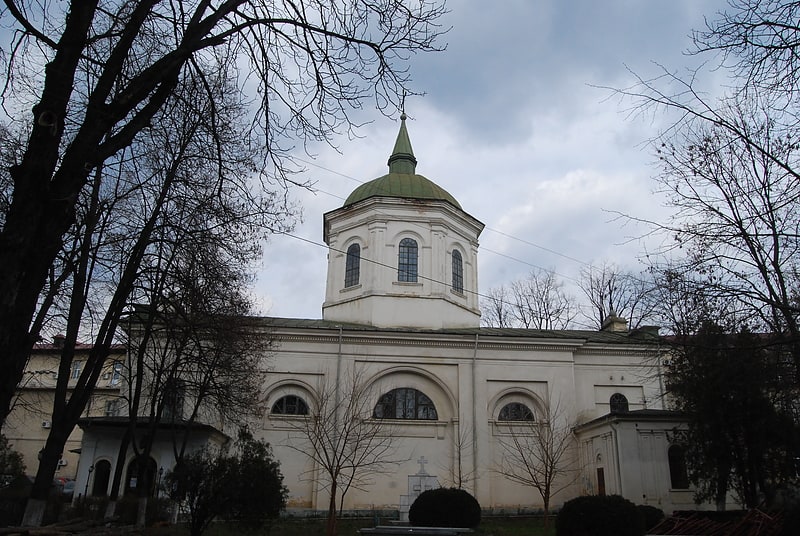
Also known as: Biserica Sfântul Spiridon din Iași
Orthodox church in Iași, Romania. Saint Spyridon Church is a Romanian Orthodox church located at 1 Independenței Boulevard in Iași, Romania. The church is dedicated to Saint Spyridon, its history is linked to that of the nearby Sfântul Spiridon Hospital.
The original church on the site was built between 1752 and 1758. Funds were supplied by the learned boyar Ștefan Bosie, whom the expense bankrupted; he was later joined by hetman Vasile Ruset and the merchant Anastasie Lipscanul of Corfu. The ktitors also founded the hospital, Iași's first, in 1757. This took place during the rule of Prince Constantin Racoviță, who issued the decree ordering construction. It is unknown why the somewhat unusual name of Spyridon was selected: this is possibly because he was the patron saint of the Ghica family, or because his canon was printed at Iași in 1750. The church was initially used as a monastery, and in 1763, Ecumenical Patriarch Samuel declared it stauropegic, making its archimandrite the titular bishop of Irenopolis. In 1770, during the Russo-Turkish War, the Russian army was quartered inside the building.
The church was gravely damaged in the 1802 Vrancea earthquake, demolished in late 1804 and completely rebuilt in 1807. It was repaired in 1862, 1938, 1976 and 1990. The bell tower dates to 1786, a conclusion drawn from the presence of Alexandru Mavrocordat Firaris' coat of arms. A date of 1757 has also been proposed, coinciding with the surrounding wall built by Racoviță. It is shaped like the reed cap worn by Saint Spyridon; at first resembling a Russian onion dome, the present shape was fixed in 1862. Initially, its tip featured a crescent, the idea being to offer a certain protection against Ottoman attacks. In 1807, when the structure was rebuilt, this was replaced by an eye within a triangle, a symbol of divinity. The Parisian clock was added after 1830, in line with an express provision of Regulamentul Organic. The roof's current form also dates to 1862. Twin fountains, inscribed in Greek, Ottoman Turkish and Romanian Cyrillic, were added by Grigore III Ghica in 1765; the water flowed along a tiled path from what is now the Botanical Garden.
Architecturally, rectangular forms predominate. The interior features a central nave flanked by two smaller side naves. The mural frescoes beneath the cupola depict the Four Evangelists, while the cupola ceiling shows Christ Pantocrator and the altar has the Holy Trinity. The ornamented marble imitation from the interior dates to 1863. During the same period, Eustație Altini executed the iconostasis painting. In 1863, Dimitrie Ghica had the iconostasis repaired and coated in gold. The church property includes valuable items such as worship items in precious metals, vestments, and sacred books decorated with gilt silver and Biblical scenes in porcelain enamel. The body of Grigore Ghica, beheaded by the Ottomans in 1777, is buried inside the church, while his head was taken to Istanbul. There Greek inscription mentions a "premature death", while the sculpted palm branches signify martyrdom.
Both the church and the bell tower are listed as historic monuments by Romania's Ministry of Culture and Religious Affairs.[31]
Address: Bulevardul Independenței 1, 700111 Iași
Saint Demetrius-Balș Church

Also known as: Biserica Sfântul Dumitru-Balș din Iași
Saint Demetrius-Balș Church is a Romanian Orthodox church located at 14 Decembrie 1989 Street, nr. 15, in Iași, Romania. It is dedicated to Saint Demetrius of Thessaloniki.
The church was built in 1690 by medelnicer Ionașcu Balș (1663-1738). Belonging to the Moldavian style, it was devastated by fire in 1723; the blaze began in a nearby brick workshop or, according to other sources, in the church itself. Balș and his son Lupu rebuilt the church, adding stone walls and a new roof. Initially, the building was entered through an open terrace on the south side; its remnants can still be seen in the stonemasonry. There was a niche with an icon of Saint Demetrius, now partly hidden by a window. In 1781, a foyer was added on the western side, with a bell tower above. At that point, the entrance was moved to the west, through the closed foyer under the tower, while the other door was shut up behind a wall. For a long time, members of the Balș family financed the church, which had a separate administration, even though it was a filial of the Saint George-Lozonschi Church. Various princes of Moldavia, particularly members of the Mavrocordatos family, offered gifts to the parish.
In 1857, a grave was built for the Balș family in the vestibule, gathering remains from the cemetery in the churchyard. In 1900, eight headstones of the family were brought in from the cemetery and placed in the foyer walls. Five are in the Romanian Cyrillic alphabet, two in Greek and one is almost completely effaced. The plate for the crypt, made of Carrara marble, was vandalized by an individual who removed the Greek letters of gilt metal. A professor attempted to decipher the inscription in 1902, but could only make out a few words. At that point, another plaque was set up; the refurbishment was carried out by Gheorghe Balș.
Damaged by fire and earthquakes over time, the church was restored in 1897 by administrator Mihail Balș, following the plans of architect Iancu Catargiu. This is mentioned in a dedication above the entrance, and at the same time, a white marble plate with the names of several deceased was also installed. Serious repairs were undertaken in 1948-1952 in order to fix damage caused during World War II. New renovations took place in 1994-1998; the iconostasis was repaired and the interior was repainted in neo-Byzantine fresco. The church has two bells from 1690 and 1692, while the iconostasis was carved in classic Baroque around 1800.
The church is listed as a historic monument by Romania's Ministry of Culture and Religious Affairs.[32]
Address: Bulevardul Ștefan cel Mare și Sfânt 15, 700064 Iași
Saint Nicholas-Ciurchi Church
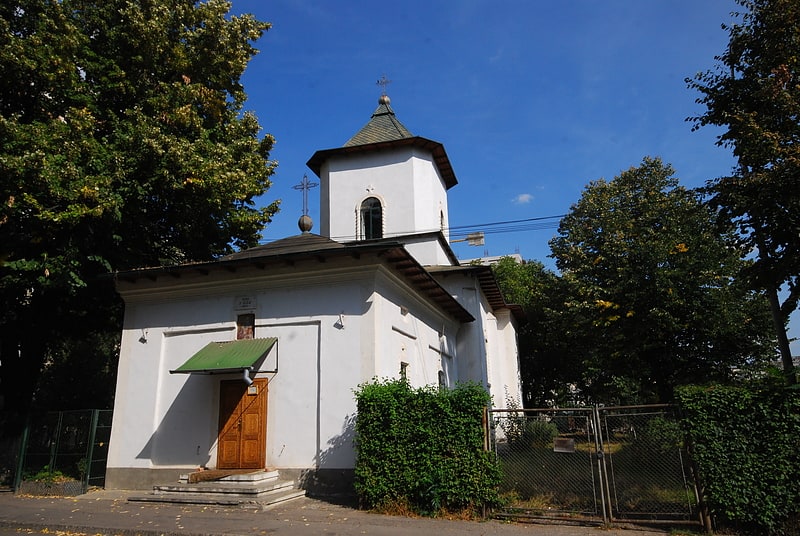
Also known as: Biserica Sfântul Nicolae-Ciurchi din Iași
Orthodox church in Iași, Romania. Saint Nicholas-Ciurchi Church is a Romanian Orthodox church located at 70 Vasile Lupu Street in Iași, Romania. It is dedicated to Saint Nicholas.
Located on the summit of Tătărași Hill, the church was built of stone and brick in its current form from 1810 to 1813 by two priests and their parishioners. It stands on the site of an older church, first mentioned in 1754. There is a spire above the vestibule, and a foyer was added in 1842. The iconostasis is made of artistically carved wood, combining Baroque and Renaissance style. Aside from icons, it features engravings of symbolic figures and vegetation. Its icons of Christ, the Virgin Mary, Saint Nicholas and the Archangels are decorated in silver. The nave also features an icon of the Life-giving Spring, encased in silver.
The walls were painted in oil in 1924. This deteriorated over time, so that they were repainted in fresco from 1989 to 1991. Two old houses belonging to the parish were demolished during systematization. In 1994, following the Romanian Revolution, a new chapel was built, the old framework replaced and the roof covered in tin. An area for lighting candles was set up in 2000.
The church is listed as a historic monument by Romania's Ministry of Culture and Religious Affairs.[33]
Ss. Theodore Church
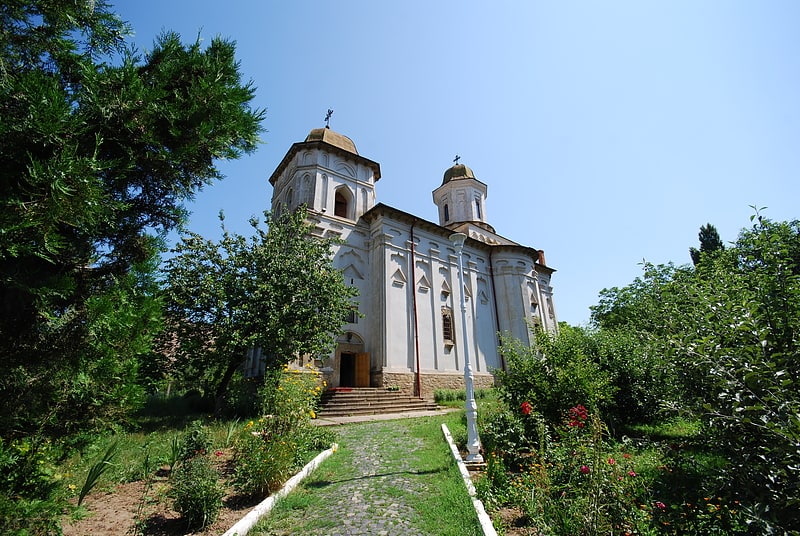
Also known as: Biserica Sfinții Teodori din Iași
Orthodox church in Iași, Romania. Ss. Theodore Church is a Romanian Orthodox church located at 14 Sfântul Teodor Street in Iași, Romania. It is dedicated to Saints Theodore of Amasea and Theodore Stratelates.
The first church on the site was made of wood. Historians initially believed it was built by Prince Eustratie Dabija (reigned 1661-1665) and his wife Dafina. However, in 1902, Gheorghe Ghibănescu deciphered the Romanian Cyrillic inscriptions on two icons, finding that while the church was constructed under Dabija, the ktitors were vornic Solomon Bârlădeanul and his wife Maria. A document of 1669 attests the church's existence. It burned in 1735 and 1760. The present stone church is thought to date to 1761 and was financed by the nun Sofia, the daughter of a jitnicer and a widow.
Around 1783, after Sofia's death, the church was in need of repairs, while the cojoc-makers' guild was looking for a place to worship. Thus, the church came into their hands, and the new occupants rebuilt the spire roofs and exterior siding, adding a new style of ornament later copied by numerous churches in the area. They added numerous religious books to its collection, candelabras brought from Russia and a clock installed in the main spire. The guilders also donated a collection of books printed at Râmnic in 1779-1780.
The iconostasis is unique in Moldavia. Carved in rosewood, it has icons dating to Dabija's reign: those depicting Christ, the Virgin Mary, Ss. Theodore and Saint Nicholas were probably painted by Grigore Zugravul in 1665, and come from the old wooden church. The cojocari probably added a row of icons during their heyday; researchers have noted a difference in style consonant with two different time periods. The guilders were associated with the church for roughly a century. Due to industrial advances, their guild system broke down around 1920. The church was hit by a bomb in 1944, during World War II, and repaired in 1952. The repainting process degraded the appearance of the interior.
The church combines Baroque, Turkish, Moldavian and Wallachian influences, typical of the final quarter of the 18th century. It resembles several Iași churches of the period, while the window decorations are visibly influenced by Golia Monastery. It is listed as a historic monument by Romania's Ministry of Culture and Religious Affairs.[34]
Address: Strada Sfântul Teodor 14, 700115 Iași
Eternitatea cemetery
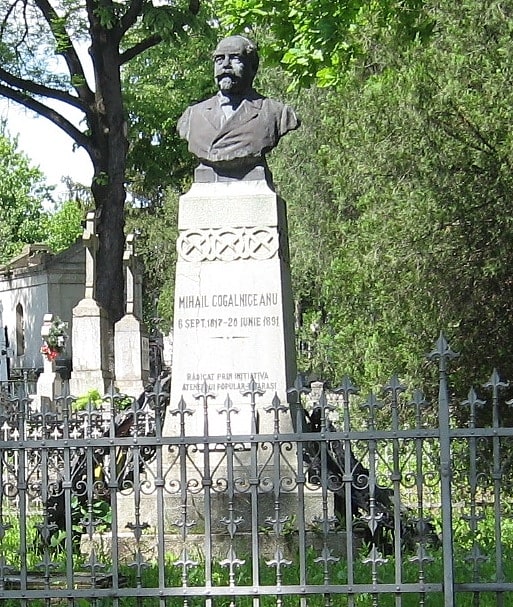
Also known as: Cimitirul „Eternitatea” din Iași
Cemetery in Iași, Romania. Eternitatea is the biggest cemetery in Iași, Romania.[35]